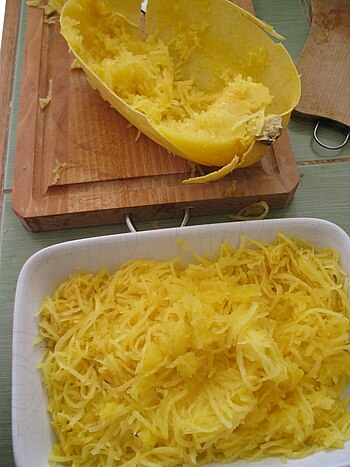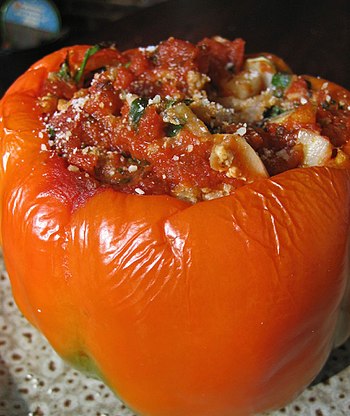One of the best ways to get on track to healthy eating is to eliminate some of the unhealthy foods from your diet, such as processed foods and simple carbohydrates. This month, we'll be sharing some facts about eating fewer carbs, as well as lots of delicious and healthy low-carb recipes. Today we're going to clear up some of the confusion about eating a low-carb diet.
The guidelines of any diet can be a confusing mess if you don’t have a clear understanding what the diet is all about. Why are certain foods permitted and others are eliminated? What are these 'good' foods actually doing for your body and your health?
Low carb diets focus on omitting the bad carbs (simple carbohydrates) from your diet, and replacing them with good carbs (complex carbohydrates.) Since carbohydrates provide a source of energy for your body, it’s important to remember not to eliminate all carbs from your diet. This is often a mistake among excited dieters when they don’t have all the facts.
Another mistake sometimes made by overly enthusiastic low carb dieters is thinking you can meet all your body's needs by eating just protein. Again, good carbs provide the fuel to burn for energy. You need protein, but you also need to feed your body good carbs to stay nutritionally in balance. Let's sort through some of the basic guidelines for eating a low carb diet.
Bad Carbs
 |
| Carbs, carbs, carbs. (Photo credit: Wikipedia) |
It's easy to understand why foods that have added sugars such as soda, candy, cookies, and syrups are on the bad carbs list. Sugar is sugar, right? But then you'll find white bread, pasta, cereals, rice, and potatoes on the same bad carb list. Why? Because refined flour and starchy foods actually are sugar – or at least your body thinks they are and treats them like sugar. Bad carbs (also known as simple carbs) give the body a quick energy boost, but drops off just as quickly.
Now, if you’re thinking “That’s everything I like to eat!” you are definitely not alone. When you factor in your fast paced life, along with convenience foods, it’s no surprise we get into the habit of eating foods that aren't always healthy. However, if you discipline yourself and start thinking about eating healthier as a life-altering process, or even a life-saving process, eliminating those bad carbs from your diet doesn't seem so hard to do.
Good Carbs
These foods are generally higher in fiber and sometimes in fat, too, but good fat. Like bad carbs, good carbs give you an energy boost, but it's slower to come. Unlike bad carbs, the energy boost lasts longer, preventing those dangerous spikes in blood sugar. So, what's on the good carb list?
Depending on the particular low carb diet plan you are following, you'll be able to eat many foods you already enjoy. You'll be eating a variety of vegetables, fruit and berries, along with nuts and some whole grains in order to get your good carbs. These will include non-starchy vegetables such as celery, cucumbers, mushrooms, bell peppers, onion, broccoli, eggplant, tomatoes, jicama, all sorts of greens and some root crops, just to name a few. Whereas bad/simple carbs have little or no nutritional value, these foods provide the nutrients your body needs to maintain good health and prevent illness and disease.
 |
| Roast chicken & vegetables = protein & good carbs. (Photo credit: Wikipedia) |
Healthy Proteins
Of course, a low carb diet also means a diet rich in protein and healthy fats. This will include fish, poultry, meat, cheese, nuts, and eggs, along with vegetarian choices such as beans, legumes, and even broccoli and Brussels sprouts. Not only are proteins important for your health, but the fat provided in some proteins is also necessary to help you feel full after eating. This prevents over-eating and unhealthy snacking.
The portion of protein versus good carbs varies from diet to diet. Again, you want to consult your health care professional to see how your particular health needs will be met. Also, not every protein is desirable in your healthier diet. You may want to avoid red meats, or cook leaner cuts, for instance. Cooking your proteins properly is another consideration. That lean cut of protein or seafood won't be healthy if you cook it in processed oils or cover it in sugary sauces or glazes. Eggs are considered a perfect protein but if they're fried in butter, your low carb diet will be sacrificed. Choose your protein, then choose your cooking method using good fats and you'll be on the right track.
Quick Tips
Starting a new diet may be difficult, but the hard part really comes when you are trying to stick to it. In the beginning, you're all excited about the possibilities. As time goes on, you may lose momentum, or interest, or both. There are a few ways to help you stay on track through the ups and downs that come with any diet. Let's tick off a few here:
Schedule your meal times and plan your menus in advance. This makes it easier to stick with a routine and not stray from your diet. With this, you'll also be making out grocery lists for your menus. Shopping with this list will help you avoid impulse buying.
Ease yourself into healthier eating habits so you don't feel deprived. Cutting out your favorite 'bad carbs' all at once can be stressful and leave you feeling hungry and sad. Keeping some potatoes and pasta in the house isn't the worse thing you can do. Just make them sweet potatoes and whole grain pasta to be on the healthier side. Even having a few crackers or a cookie or two isn't the end of the world. If this dieting 'safety net' is helpful, go ahead. After a while, you won't want them around anymore.
If you're craving carbs, try eating good carbs before you eat the bad carbs. Wait twenty minutes, eat more good carbs, wait, and continue. If your craving continues, go ahead and indulge in your craving. Don't beat yourself up just because you ate a snack that's not on your diet. Enjoy it, then let it go.
Make a list of 'good carbs' and keep it with you at all times. This is especially helpful when you don't get your menu plan written and find yourself in the grocery store, spinning around, uncertain of which direction to go – and hungry! Without direction, your hungry tummy will lead you into the sweets, starch, or bakery aisle. So, be prepared.
Keep in mind that if you’ve been eating a steady diet of bad carbs, so breaking this old habit won't be easy and there will be setbacks. You don't have to make the change all at once. Take baby steps if you need to at first. Make small changes in your eating habits and lifestyle. This can help you feel less deprived, which could save your diet in the long run. A healthier, more energetic lifestyle will be well worth your effort.








